
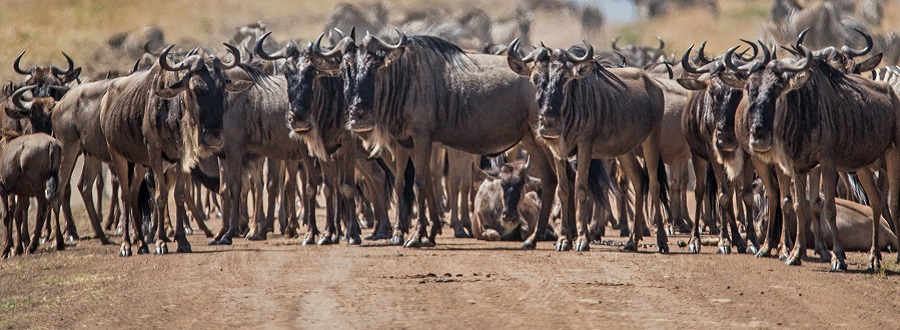
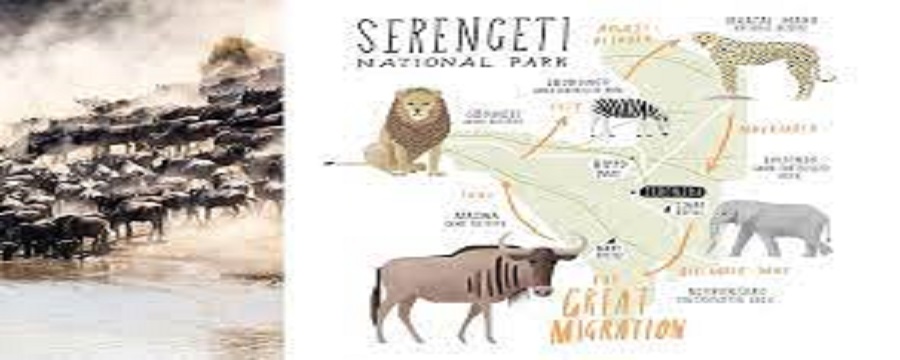
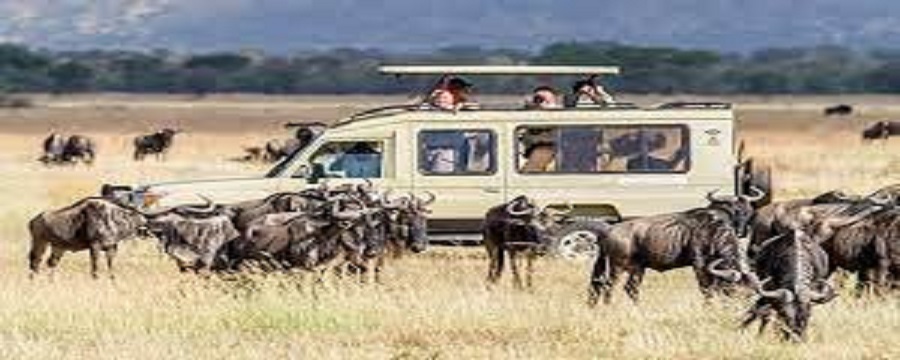
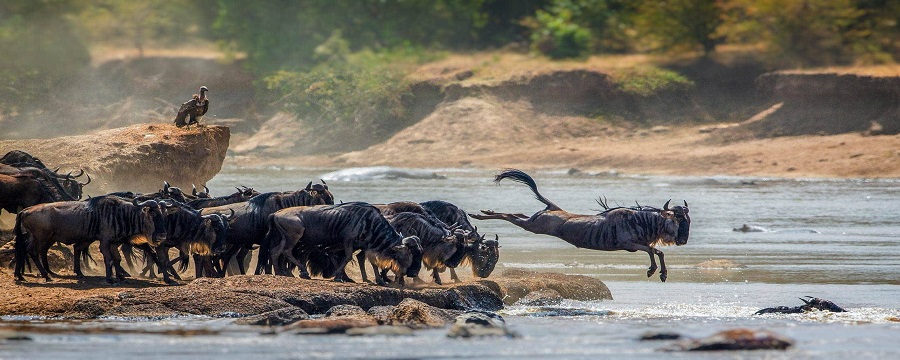
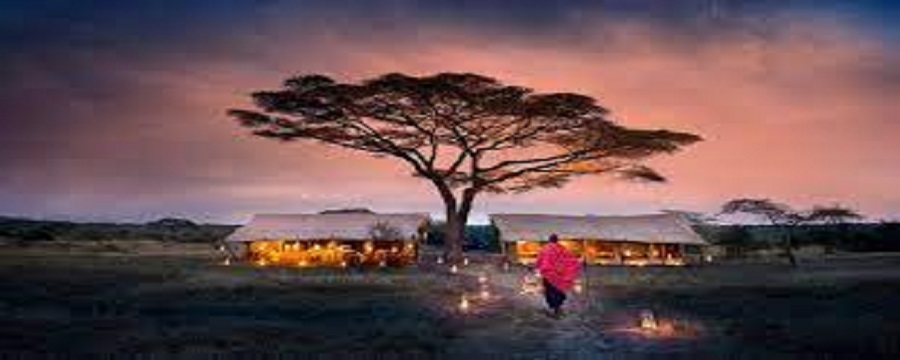
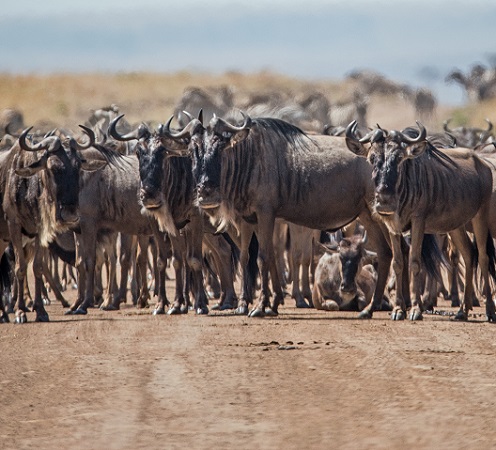
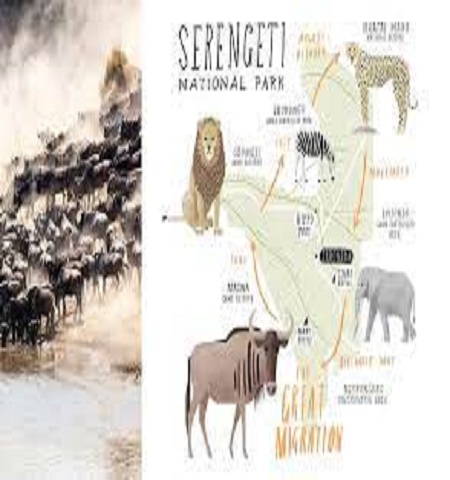
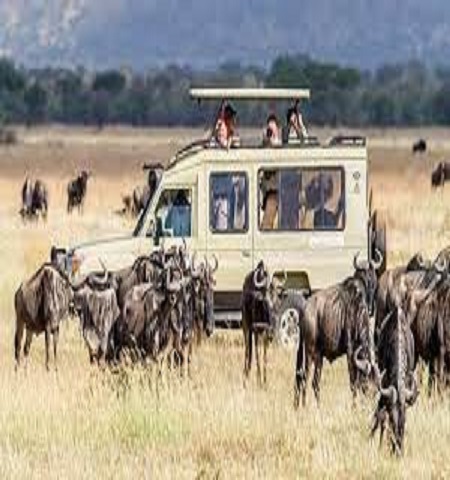
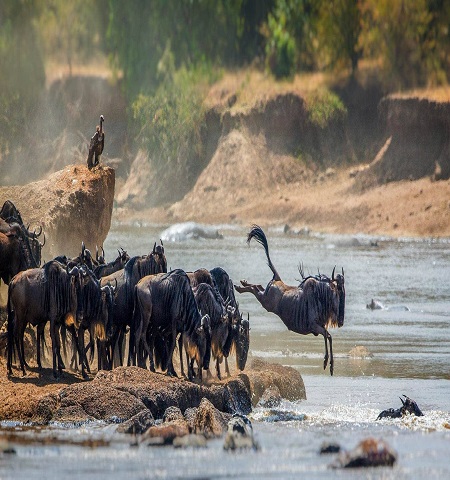
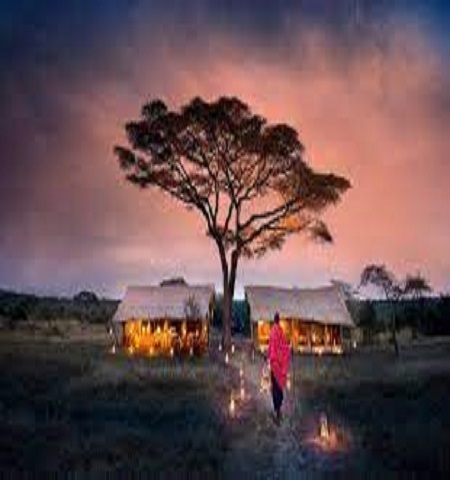
The Serengeti National Park is a large national park in northern Tanzania that stretches over 14,763 km2 (5,700 sq mi). It is located entirely in eastern Mara Region and north east portion of Simiyu Region and contains over 15,000,000 hectares (37,000,000 acres) of virgin savanna.
"Serengeti" is an approximation of the word used by the Maasai to describe the area, siringet, which means "the place where the land runs on forever". The first American to enter the Serengeti, Stewart Edward White, recorded his explorations in the northern Serengeti in 1913. He returned to the Serengeti in the 1920s and camped in the area around Seronera for three months. During this time, he and his companions shot 50 lions.
Because the hunting of lions made them scarce, the British colonial administration made a partial game reserve of 800 acres (3.2 km2) in the area in 1921 and a full one in 1929. These actions were the basis for Serengeti National Park,[5] which was established in 1951. The Serengeti gained more fame after the initial work of Bernhard Grzimek and his son Michael in the 1950s. Together, they produced the book and film Serengeti Shall Not Die, widely recognized as one of the most important early pieces of nature conservation documentary
The Serengeti gained more fame after the initial work of Bernhard Grzimek and his son Michael in the 1950s. Together, they produced the book and film Serengeti shall not die, widely recognized as one of the most important early pieces of nature conservation documentary. To preserve wildlife, the British evicted the resident Maasai from the park in 1959 and moved them to the Ngorongoro Conservation Area. There is still considerable controversy surrounding this move, with claims made of coercion and deceit on the part of the colonial authorities.
The park is Tanzania's oldest national park and remains the flagship of the country's tourism industry, providing a major draw to the Northern Safari Circuit encompassing Lake Manyara National Park, Tarangire National Park, Arusha National Park and the Ngorongoro Conservation Area. It has over 2,500 lions and more than 1 million wildebeest.
Please click +255 764 415 889 on WhatsApp or africanaturaltours2008@gmail.com to contact us for more details and booking about Serengeti National Park.
Serengeti is considered Tanzania's best park. Big herds of buffalo, smaller groups of elephant and giraffe, and many antelope, such as eland, topi, kongoni and impala are resident at any time of the year. All three big cats are easily seen. Lion are often found on a kill. Cheetah are very common on the southeastern plains, while leopard can typically be found lazing in one of the big trees along the Seronera River.
The Park has the highest ostrich population in Tanzania and probably Africa, making the population globally important. Serengeti National Park is at the heart the larger Serengeti ecosystem, which is defined by the area covered by the annual migration.
The Serengeti is well known for the largest annual animal migration in the world of over 1.5 million blue wildebeest and 250,000 zebra and the largest lion population in Africa. It is under threat from deforestation, population growth and ranching.
The Serengeti hosts the second largest terrestrial mammal migration in the world, which helps secure it as one of the Seven Natural Wonders of Africa, and as one of the ten natural travel wonders of the world. Blue wildebeest, gazelles, zebras, and buffalos are some of the commonly found large mammals in the region.